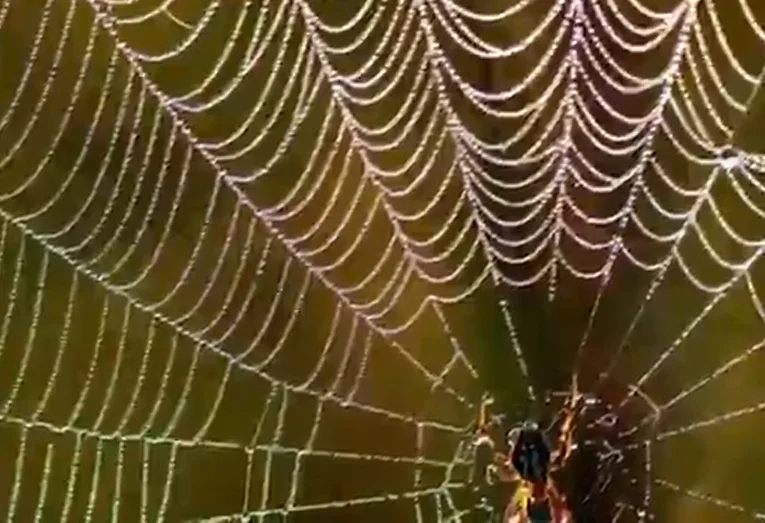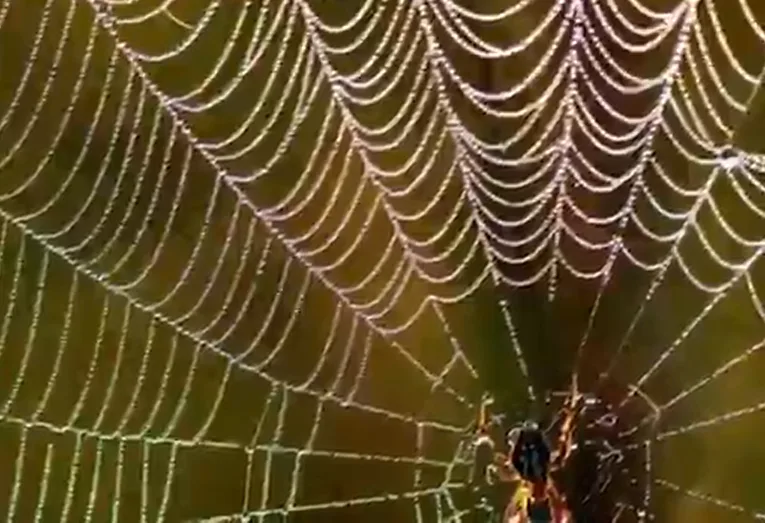
Listen to music made by spiderwebs
This could be described as haunting, otherworldly or trippy. But humans could potentially learn a lot from music derived from spiderwebs.
From communication to construction, spiderwebs may offer an orchestra of information.
McAfee Professor of Engineering at the Massachusetts Institute of Technology Markus Buehler presented his research at to the American Chemical Society on Monday (April 13).
Buehler said he and his team of researchers created 3D models of spiderwebs in different conditions, such as construction, repair, hunting and feeding. Then, they listened for patterns to the spider signals and recreated the sounds with the help of computers and mathematical algorithms.
"For the spiderweb, we essentially use the equations of a vibrating string, the sort of relationships that relate to the tension in the string, the length of the string, to the frequencies. And this is what is really at play when you look at a guitar or violin, you plug it, you will hear a certain frequency, a certain pitch. And those are quite simple physics equations," Buehler explained to Reuters.

Courtesy: REUTERS
Unlike other animals, the world of spiders is not audible to the human ear or visible to the human eye, so artificial intelligence was used to interpret the spider sounds.
"If you think about a bird... some people can actually whistle bird songs. And that's something you can learn because they speak in the same frequency range and they have the same kind of auditory information," said Buehler. "With spiders that's very difficult. And so we actually use artificial intelligence to do that job because it's so foreign and so strange. And when you listen to the music, you can you can kind of hear that it's a very strange world where we're engaging with."
The team modeled both two dimensional spider webs that kind of look like a harp and more complicated and complex 3-D cobwebs.
A process of sonification attached musical notes to each of the spider's movements. And Buehler said what was heard included melodies, harmonies, rhythms and chords.
The professor said that by listening to the musical arrangements, we are experiencing "the kind of relationships that the spider would also experience". He added, "So we can begin to feel a little bit like a spider in that way."
Buehler said he and his team are also looking into if the music could allow humans to understand the language of the spider and one day communicate with them.
There are more than 47,000 species of spiders and they all silk spin webs to provide housing and to catch food. Buehler said the "living structure" of a spiderweb could also possibly lead to innovations in construction, maintenance and repair.
Scientists say the silk from a spiderweb is five times stronger than steel.
"We can imagine creating a synthetic system that would mimic what the spider does in sensing the web, repairing the web. And so you can imagine, yeah, future bridges of airplanes or structures might have some of that repair mechanism built in and you wouldn't build something and then wait until it breaks. But you're actually continuously repair it and becomes a living organism."
Researchers Ian Hattwick, Isabelle Su, Christine Southworth, Evan Ziporyn, and Tomas Saraceno worked with Buehler to sonify the spiderwebs.
(Production: Angela Moore)





